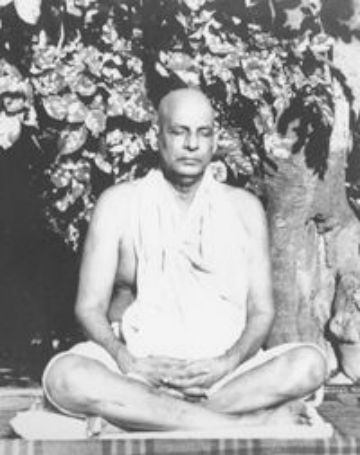Yoga and Meditation

"Meditation is the royal road to freedom, a mysterious ladder, linking earth to heaven, leading us from darkness to light and from mortality to immortality." Swami Sivananda
Intuition is the only way to understand
Meditation is a state of consciousness that can only be understood directly and intuitively. Habitual experiences are limited by time, space and the laws of causality, whereas the state of meditation transcends all barriers. In meditation, past and future come together. Only one certainty remains-I am-in an infinite, eternal present moment.
Physical effects:
The calm of meditation is deeper than that of sleep. Meditation relieves stress - the whole body and every cell rest. Meditation preserves youth and prevents premature aging.
Effects on the mind:
Meditation experiences such as unity, happiness and harmony develop new habits of thought. Negative tendencies are overcome and the mind is strengthened. Meditation leads to a dynamic personality, powerful language, joy and enormous mental stamina.
Meditation is reputed to be the best remedy for better living, recommended by doctors and practised by millions of devotees.
What it can do:
- Soothe migraines
- Combat insomnia
- Relieve intestinal dysfunctions
- Relieve premenstrual syndrome
- Soothe stomach cramps
- Activate memory
- Establish physical and mental relaxation
- Restore energy and improve sleep and mood
- Reduce blood pressure and the risk of cardiovascular disease
- Release stress, anxiety, anguish and fear
- Release illnesses linked to the somatization of our malaise
- Help reduce consumption of stimulants or sedatives, tobacco, coffee, alcohol, drugs, etc.
- Enable us to reach a "place" of tranquility, a source of serenity, creativity and efficiency
- To be invaded by a feeling of peace
According to the sages, it enables us to touch the pure, original spirit that exists in all of us, but which often lurks in the shadows of our worries.
How to practice: (from Lorraine Turner's "Guide to Meditation")
1. Meditation in the lotus or sitting position:
The most common technique is to sit in the lotus position, concentrating on the breath.
2. Mindfulness meditation:
But this technique isn't the only one, meditation is also practiced through our attitude: the Art of Being Attentive: Living in the Present, called mindfulness meditation.
3. Mantra meditation
Meditation is also practised by concentrating on mantras: some famous ones are OM MANI PADME HUM, meaning "salute to the lotus jewel", or "OM", meaning "creation of the universe".
4. Walking meditation
While walking to work or for a walk, concentrate on your breathing and walk with your back straight and your head in line with your spine. Walk diligently, concentrating on each step. Be aware of all that's going on around you: sounds, colors, smells.
As a general rule:
The "ordinary" man in his usual waking state is a sleeping being who almost never reaches true consciousness.
Most human beings live like machines, reacting mechanically to external and internal stimuli, without being masters of themselves.
All their thoughts and emotions are essentially unconscious mechanical reactions.
So they have no real "I" (see Gurjieff, "Life is only real when I am").
This ego is merely the sum of contradictory voices that manifest themselves as circumstances dictate.
Only by raising our level of consciousness through meditation and "self-remembering" can we crystallize our deepest "I" and achieve true inner mastery.